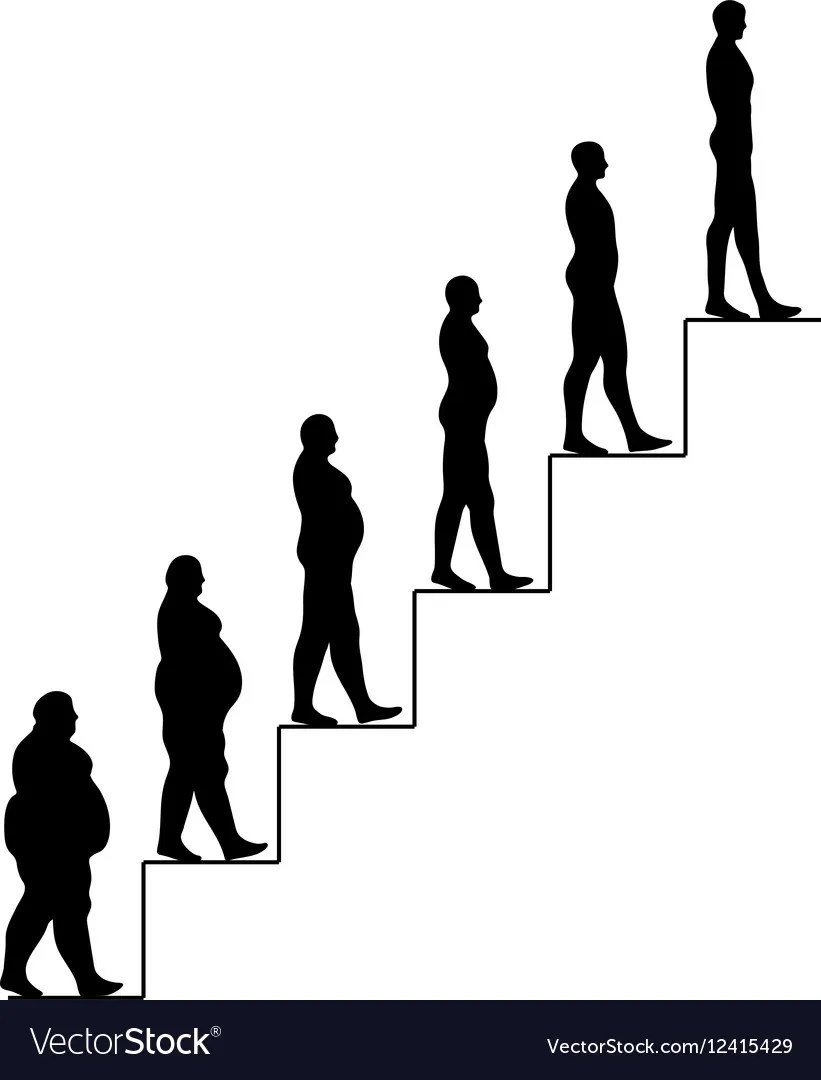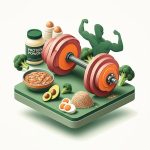Frustrated with the scale not budging? Understanding the different stages of weight loss can transform your approach from a source of stress to a structured journey. Many women find that their bodies respond differently to diet and exercise than men’s, making personalized knowledge key.
At a Glance:
- Discover how initial rapid weight loss gives way to fat loss and muscle development.
- Learn effective strategies to bust through plateaus and maintain long-term results.
- Understand how hormonal fluctuations and other female-specific factors affect each stage.
- Get practical tips for tracking progress beyond the scale and staying motivated.
- Gain clarity on realistic expectations for each phase of your weight loss journey.
Why Weight Loss Feels Different for Women
Let’s face it: the weight loss journey isn’t a one-size-fits-all. Women, in particular, face unique challenges that can influence their progress. These include:
- Lower Muscle Mass: Women generally have less muscle mass than men, leading to a lower resting metabolic rate. This means they burn fewer calories at rest, impacting weight loss.
- Hormonal Fluctuations: Menstruation, pregnancy, and menopause can significantly affect metabolism, appetite, and fat storage.
- Postpartum Challenges: Losing weight after pregnancy can be challenging due to hormonal shifts and the demands of motherhood.
- Emotional and Mental Health: Stress, anxiety, and body image issues can impact dietary choices and exercise habits.
The Four Key Stages of Weight Loss
Understanding the stages of weight loss empowers you to anticipate changes, adjust your strategies, and stay motivated. Here’s a breakdown:
1. The Initial Drop (0-2 Weeks): Water Weight and a Rush of Motivation
This is often the most exciting stage! You’ll likely see rapid weight loss, primarily due to the depletion of glycogen stores (stored carbohydrates) and associated water.
Think of glycogen as the body’s short-term energy reserve. When you reduce your carbohydrate intake, your body taps into these reserves. Each gram of glycogen holds onto about 3 grams of water, which is then flushed out.
What to expect:
- Rapid weight loss: Expect to see the biggest drop in weight during this phase.
- Increased energy: Many women report feeling more energetic as they eliminate processed foods and focus on whole, nutritious meals.
- High motivation: The initial results can be incredibly motivating.
Your Action Plan: - Focus on a calorie deficit: Aim for a modest deficit (around 500 calories per day) through a balanced diet.
- Stay hydrated: Drink plenty of water to support your body’s natural processes.
- Prioritize whole foods: Focus on lean proteins, fruits, vegetables, and whole grains.
- Avoid crash diets: These can lead to muscle loss and rebound weight gain.
- Track how you feel: Start a journal to record your energy levels, mood, and cravings. This is crucial to understanding the impact of the eating changes.
2. Fat Loss and Muscle Building (2-6 Weeks): Visible Changes
As you move into weeks 2-6, the weight loss process shifts from primarily water loss to actual fat loss. This is also an excellent time to focus on building muscle, which will boost your metabolism and help you burn more calories long-term.
What to expect:
- Noticeable fat loss: Clothes will start to fit looser, and you may notice visible changes in your body composition.
- Increased strength and stamina: As you incorporate exercise, you’ll likely feel stronger and more energetic.
- Changes in body composition: You’ll start to see a decrease in body fat percentage and potentially an increase in muscle mass.
Your Action Plan: - Incorporate resistance training: Aim for at least two to three strength training sessions per week, focusing on major muscle groups. This helps maintain (or build) muscle mass, which is critical for a healthy metabolism.
- Example: Squats, lunges, push-ups, rows, and planks.
- Increase protein intake: Protein is essential for building and repairing muscle tissue. Aim for at least 0.8 grams of protein per kilogram of body weight per day.
- Good sources: Lean meats, poultry, fish, eggs, beans, lentils, and tofu.
- Track measurements: Take body measurements (waist, hips, thighs) every two weeks to track progress beyond the scale.
- Progress photos: Take progress photos to visually document your transformation.
3. The Plateau (6-12 Weeks): Navigating the Body’s Adaptation
At some point, usually around weeks 6-12, weight loss often slows down or stalls completely. This is a natural adaptation of your body as your metabolism adjusts to the reduced calorie intake and lower body weight. Don’t panic! This is a common stage of weight loss.
What to expect:
- Slowed or stalled weight loss: The scale may not budge for a week or two (or longer).
- Frustration and discouragement: It’s easy to feel frustrated when you’re not seeing results.
- Increased hunger: Your body may start signaling that it needs more calories.
Your Action Plan: - Re-evaluate your calorie intake: As you lose weight, your body needs fewer calories. Recalculate your calorie needs to ensure you’re still in a deficit.
- Switch up your workout routine: Your body adapts to exercise over time, so it’s important to challenge it with new activities or increased intensity.
- Example: If you’ve been doing mostly cardio, add in more strength training. If you’ve been lifting the same weights, increase the weight or reps.
- Increase your NEAT: Non-Exercise Activity Thermogenesis (NEAT) refers to the calories you burn through daily activities outside of planned exercise. Find ways to move more throughout the day.
- Examples: Take the stairs instead of the elevator, walk during your lunch break, stand while working.
- Track progress beyond the scale: Focus on non-scale victories, such as improved energy levels, better sleep, and clothes fitting better.
- Be patient and persistent: Remember that weight loss is not always linear. Stay consistent with your healthy habits, and you will eventually break through the plateau.
4. Sustained Success (3-6 Months Onward): Building a Healthy Lifestyle
This is the stage where you transition from actively losing weight to maintaining your new, healthier lifestyle.
What to expect:
- Steady progress: You’ll continue to see gradual improvements in your overall health and well-being.
- Improved physical and mental health: You’ll likely experience increased energy levels, better sleep, reduced stress, and improved mood.
- Greater confidence: You’ll feel more confident in your body and your ability to maintain a healthy lifestyle.
Your Action Plan: - Prioritize planned meals: Continue to plan your meals in advance to ensure you’re eating a balanced diet.
- Maintain an active lifestyle: Make physical activity a regular part of your routine.
- Stay consistent: Consistency is key to long-term weight management.
- Monitor your progress: Continue to track your weight, measurements, and progress photos periodically.
- Celebrate your successes: Acknowledge and celebrate your achievements along the way.
Cracking the Code: Practical Tips for Women’s Weight Loss Journey
Here are some actionable best practices to ensure you overcome challenges at each stages of weight loss:
- Hydrate Strategically: Drink water especially before meals to feel fuller.
- Prioritize Protein: Protein curbs hunger and preserve muscle mass. Aim for lean sources with each meal.
- Fiber Up: Fiber adds bulk to your meals, promoting satiety, and keeping things regular.
- Mindful Eating: Pay attention to hunger cues, savor each bite, and eat slowly.
- Strength Train: Incorporate strength training at least twice a week to build muscle and boost your metabolism.
- Move More: Aim for at least 30 minutes of moderate-intensity exercise most days of the week.
- Sleep Well: Aim for 7-8 hours of quality sleep each night to regulate hormones and reduce cravings.
- Manage Stress: Practice stress-reducing activities like yoga, meditation, or spending time in nature.
- Track Progress: Keep a food journal, track your weight, and take progress photos to stay accountable.
- Seek Support: Connect with a friend, family member, or support group for encouragement and accountability. Remember that a registered dietician or certified personal trainer can provide individualizeed guidance.
Quick Answers: Busting Weight Loss Myths & Misconceptions
- Q: Is it normal for weight loss to slow down after the first few weeks?
- A: Absolutely. The initial rapid weight loss is primarily water weight. As you transition to fat loss, the process naturally slows down.
- Q: How often should I weigh myself?
- A: Weighing yourself once a week is generally sufficient to track your progress without becoming overly fixated on the numbers.
- Q: What if I “fall off the wagon” and overeat?
- A: It happens to everyone! Don’t beat yourself up about it. Simply get back on track with your healthy habits at your next meal.
- Q: Are there any weight loss pills or supplements that actually work?
- A: Most weight loss pills and supplements are not effective and can even be harmful. Focus on building sustainable healthy habits through diet and exercise. Always consult with a healthcare professional before taking any supplements.
- Q: How do hormones affect women’s weight loss?
- A: Hormonal fluctuations during menstruation, pregnancy, and menopause can impact metabolism, appetite, and fat storage. Understanding these hormonal influences can help you adjust your strategies and stay motivated. Read more about these hormonal effects in Understanding female weight loss stages.
- Q: What are some good signs that my weight loss plan is working, even if the scale isn’t moving?
- A: Other signs of progress include clothes fitting looser, increased energy levels, improved sleep, reduced cravings, and visible changes in your body shape.
Your Weight Loss Playbook: A Quick-Start Guide
Ready to take charge of your weight loss journey? Here’s a simplified roadmap:
- Weeks 1-2:
- Calculate your calorie needs.
- Focus on whole, unprocessed foods.
- Drink plenty of water.
- Start a food journal and track your progress.
- Weeks 2-6:
- Incorporate resistance training.
- Increase your protein intake.
- Take body measurements and progress photos.
- Weeks 6-12:
- Re-evaluate your calorie intake.
- Switch up your workout routine.
- Find ways to move more throughout the day.
- Months 3-6 and beyond:
- Prioritize planned meals.
- Maintain an active lifestyle.
- Stay consistent and monitor your progress.
- Celebrate your successes!
By understanding the stages of weight loss, you can approach your journey with realistic expectations, a positive mindset, and the right tools to achieve your goals. Remember to consult with a medical professional for personalized advice and to address any concerns during weight loss.
- Gluten Free Meal Prep Ideas for Delicious, Hassle-Free Eating - November 28, 2025
- Gluten Free Meal Prep for Stress-Free and Healthy Eating - November 27, 2025
- Quick And Easy Chicken Thigh Meal Prep For Weight Loss - November 26, 2025










